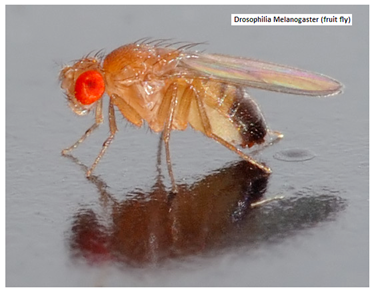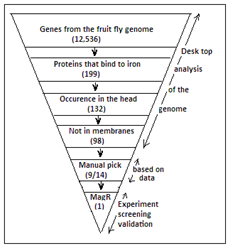The nature of the bio-compass may have fallen to research, says S.Ananthanarayanan.
That birds and insects can sense the earth’s magnetic field and use the direction of the field to navigate was long proposed, sometimes doubted and now firmly established. But the mechanism by which the perception actually comes about has remained unclear. Certain substances on whose presence the ability seems to depend have been identified, but not their role in enabling response to magnetism.
Siying Qin, Hang Yin, Celi Yang, Yunfeng Dou, Zhongmin Liu, Peng Zhang, He Yu, Yulong Huang, Jing Feng, Junfeng Hao, Jia Hao, Lizong Deng, Xiyun Yan, Xiaoli Dong, Zhongxian Zhao, Taijiao Jiang, Hong-Wei Wang, Shu-Jin Luo and Can Xie, from the Chinese Academy of Sciences and the Tsinghua and Peking Universities in Beijing, report in the journal,Nature Materials, that they have isolated a protein complex that aligns itself along magnetic fields, like a magnetic needle, and could hence be the medium for their detection by animals and also the means for new applications.
That animals use the earth’s magnetic field for navigation has been established by trials where birds and insects are seen to flounder if the field were cut off or to follow the lead of artificial magnetic fields. A group in Virginia Tech, USA, reported in 2007 that fruit fly larvae that were exposed to UV light and magnetic fields immediately on hatching, later moved along the magnetic sense opposite that of the direction of the UV light used during training. The homing pigeon has been found to respond to the direction of a magnetic filed in an experimental enclosure and even that they lose the capacity if their beaks are anaesthetised. While the iron-rich substances found in pigeon beaks have subsequently been shown not to be related to this ability, the sensing has been found to depend on certain shades of light being present and also a light sensing protein known as Cryptochrome or Cry, which is known to regulate plant growth towards a source of light or the day-night cycle.
Although the Cry protein itself can be understood as capable of sensing the tilt of magnetic fields, its structure does not allow it to identify the direction of the field, the Beijing team notes. It is hence likely that there is a partner protein that helps sense polarity, they say. But magnetic sensing, to a greater or lesser extent, is found in a great variety of animals and there may be multiple mechanisms, or a universal detector that is used differently by different animals, they say.
The approach of the Beijing team was to carry out a desktop survey of a suitable genetic landscape, to see what possible factors could lead to a functional companion, which could be called MagR, of the Cry protein. As the genetic make-up of D.Melanogaster, or the fruit fly, which shows magnetic sensing, with the presence of Cry protein as a crucial factor, is well documented, this was the genome that was studied. The survey was aimed at finding proteins that would: first, bind to magnetic materials like iron or iron-sulphur clusters, second, to be found in the retina or the brain, as that was where the crucial Cry protein was expressed and third, that the protein tend to form a long chain complex with the Cry protein, to be sensitive to weak magnetic fields

Identifying MagR
The survey resulted in 199 iron-binding proteins, and of these, 132 were found to be expressed in the head, including the brain and the eyes. Applying criteria of where in the cells the Cry protein is located, the list was further reduced to 98, and then, with further analysis that made use of other published research, just 14 candidates were selected, to see which ones may form a stable protein complex with Cry. This list of 14 was further reduced to 9, and finally, on experimental screening, it was found that only one protein, called CG8198, formed a stable complex with Cry. Interestingly, the Beijing paper says, this is the protein that has been reported to be essential for the day-night rhythm of the fruit fly. As Cry is involved in this rhythm and sensitivity to light, these properties and magnetoreception seem to be inter-related, the paper says.

The genes for both MagR, which has been identified as CG8198, and Cry were further found to be expressed in almost all animals. Tests carried out with the MagR and Cry proteins in the butterfly, pigeon, mole rat, minke whale and humans. and it was seen that the MagR- Cry complex occurs in all. Some species have several forms of Cry, for different purposes, and in these species only one of them forms the complex with MagR. Tests with the MagR – Cry complex after being isolated also show the complex has inherent magnetic property, to help it align itself with a magnetic field.
What has been done is hence to clearly prove that there is an iron-sulphur cluster protein that interacts with the known magnetoreception-related protein, Cry, to form a nanoscale complex that seems to be the same across species and is able to align along magnetic fields. The interaction of the protein with Cry and its structure, of a long, iron-containing protein, surrounded by Cry proteins, suggests a relationship between magnetic sensing and light sensing or day-night timing.
Apart from being a step forward in understanding a mechanism that seems to be of great antiquity, as it found in the same form in many species, magnetic features of a protein complex suggest methods to isolate and manipulate macromolecules using magnetic fields, which could have wider applications, the paper says.
------------------------------------------------------------------------------------------